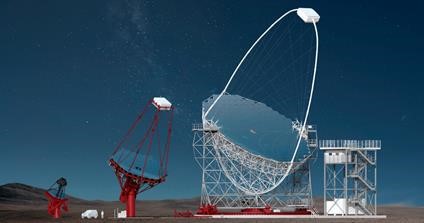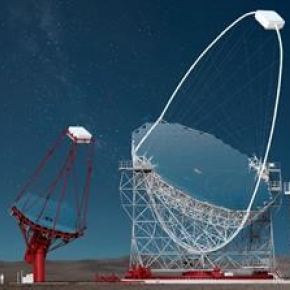CTAO gamma ray observatory promoted to European Research Infrastructure Consortium
The European Commission announced this Tuesday, January 7, that it has granted the Cherenkov Telescope Array Observatory (CTAO) the status of a European Research Infrastructure Consortium (ERIC), a specific legal form under European Union law that facilitates the creation and operation of research infrastructures of European interest. CTAO thus becomes the 29th ERIC created since 2009.
By providing an internationally recognized legal structure, the European Commission’s decision will accelerate the construction of the Observatory and facilitate its operation by ensuring the stability of infrastructure funding, supporting the recruitment of new personnel, and establishing a framework for the worldwide distribution of the Observatory’s data.
This decision comes at a pivotal moment for CTAO: the first telescopes at its northern site, located in the Canary Islands (Spain), are beginning to collect data, and the first telescopes will be installed at its southern site in the Atacama Desert (Chile) next year. Once operational, CTAO will become the largest and most sensitive observatory for gamma-ray astronomy worldwide. It will help shed light on major questions in modern physics, such as the origin and acceleration of cosmic radiation, the behavior of matter in the extreme environments of black holes, and the nature of dark matter.
This project is led by a scientific collaboration bringing together 150 laboratories from about 30 countries, in which France has played a key role—not only in defining the scientific objectives but also in developing and now constructing the telescope arrays. This involvement led to the project being recognized as a French Very Large Research Infrastructure (IR*) as early as 2018.
“The ERIC status establishes CTAO as one of the major infrastructures of European research,” said Thierry Stolarczyk, co-spokesperson of the CTAO Scientific Consortium. “This event rewards 20 years of efforts by researchers, engineers, and technicians from the international consortium, who have been dedicated to defining the scientific and technical project and are now involved in building the telescope arrays. It symbolically marks the beginning of a new phase toward the exploitation of the first data, which will soon lead to new discoveries in the gamma-ray Universe.”
“The creation of CTAO ERIC at the beginning of 2025 is excellent news for the entire European gamma-ray astronomy scientific community. This decision has been highly anticipated, particularly by French research institutions, which are among the main contributors to the infrastructure,” added Guy Perrin, French delegate to the CTAO Board of Governmental Representatives.

About the French contribution to CTAO
The French scientific and technical staff involved in CTAO come from CNRS laboratories (CNRS Nucléaire & Particules1 and CNRS Terre & Univers2) and the IRFU at CEA Paris-Saclay. They are contributing to many aspects of setting up the infrastructure and its scientific operation. A major part of the contribution concerns the three types of telescopes (in the photo, from left to right, SST, MST and LST), several dozen of which will equip the Observatory's two networks, detecting the Cherenkov light produced by the interaction of gamma rays in the atmosphere, between 10 GeV and 100 TeV. More specifically, the French contribution concerns: for the LST, the design of the arches, the camera controllers and the motorisation of the mechanical structure; for the MST, the design, construction and integration of fast electronic cameras (NectarCAM) and the design and supply of mirrors; for the SST, the design and integration of the telescopes. The French teams are also contributing to the monitoring of atmospheric quality through the construction of a LIDAR on the southern site. Finally, they are playing a leading role in the deployment of the data analysis chain for the telescope networks and the tools for scientific analysis of the celestial vault for future users of the Observatory.
Read the CTAO collaboration release here
1 APC, CPPM, IJCLab, LAPP, LLR, IP2I, LPNHE and LUPM laboratories.
2 IPAG, IRAP, LUTH and OCA laboratories.
